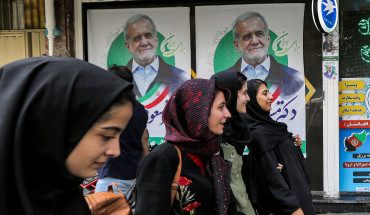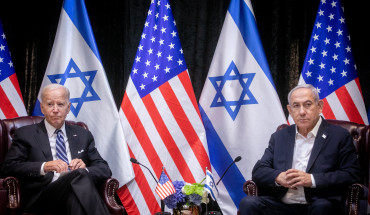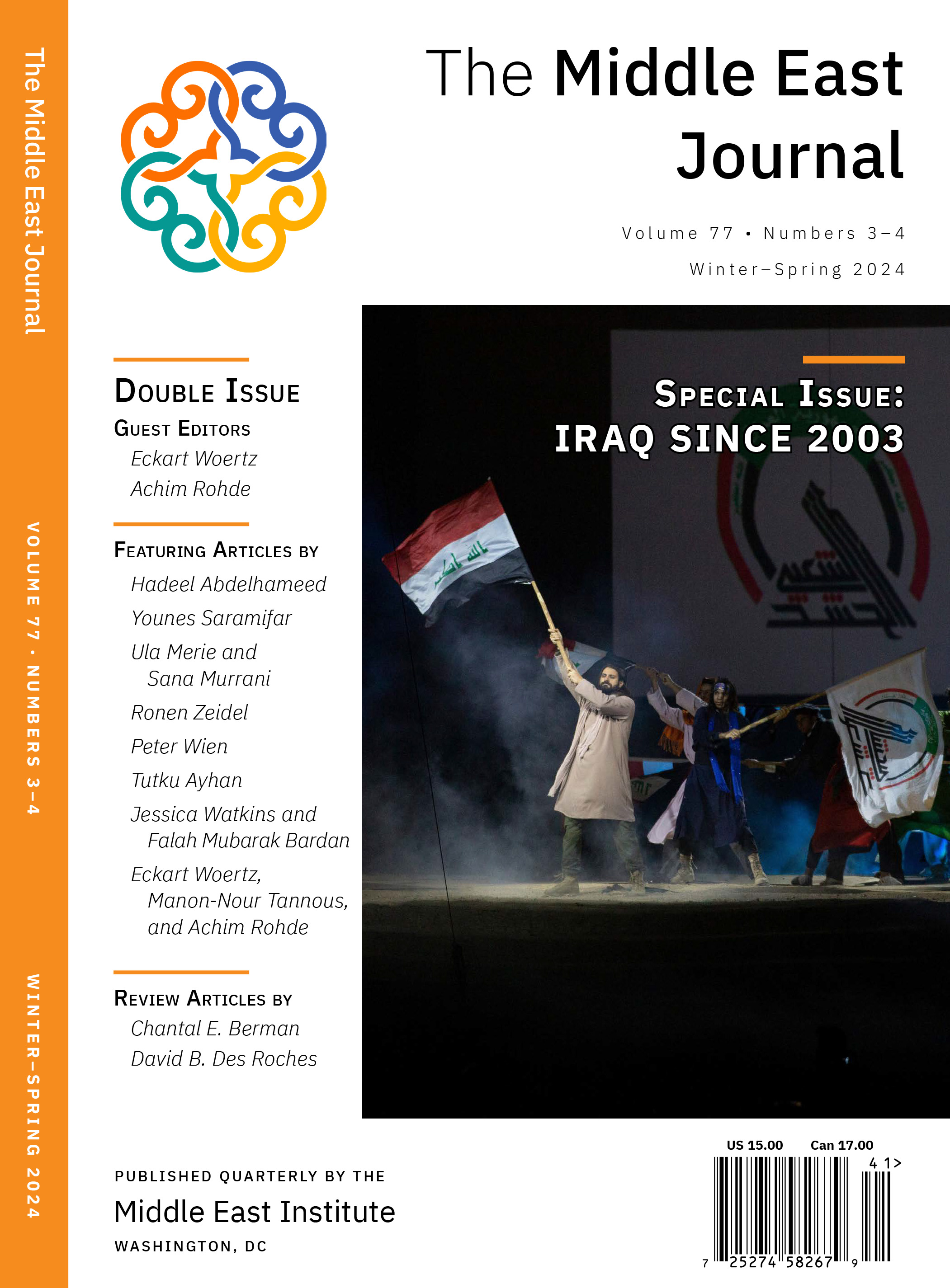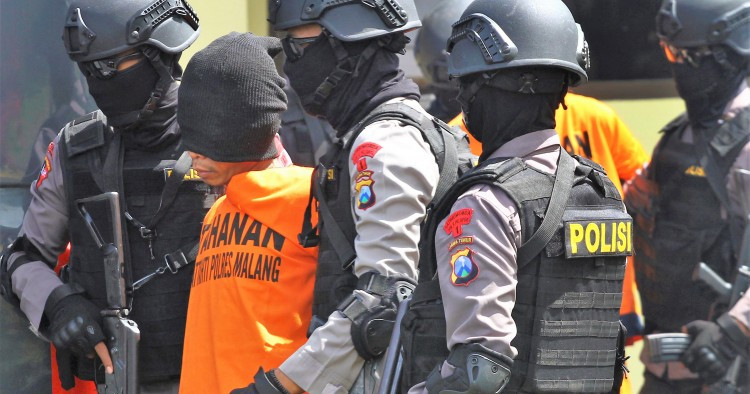This article is part of a series that explores the threat posed by the Islamic State (IS) to Asia and efforts that the governments of the region have taken and could/should take to respond to it. Read More ...
In December 2020, the Indonesian anti-terror police unit, Detachment 88, revealed that the local Jemaah Islamiyah (JI) terrorist group had sent scores of its members to train and fight in Syria. A total of 96 operatives, mostly young and fresh recruits, had undergone a six-month pre-deployment training program at around 12 JI training sites in Central Java from 2012 to 2018. Around 66 of them eventually made their way to Syria[1], the majority of whom joined Hay’at Tahrir al-Sham (HTS), Al Qaeda’s former Syrian offshoot, which was then known as the Nusra Front, or Jabhat al-Nusra in Arabic.[2] Evidence suggests that Indonesian jihadist links to Al Qaeda in Syria go beyond HTS and is not limited to the supply of jihadi recruits. It has also involved the delivery of funding by informal Indonesian charities to HTS and other pro-Al Qaeda militant groups in Syria, including Huras ad-Din (HaD) and Malhama Tactical. However, unlike an expanding body of research that assesses Indonesian groups affiliated to the Islamic State (IS) terrorist group, studies on the involvement of pro-Al Qaeda Indonesian jihadists in the Syrian conflict have been piecemeal. This article examines the nature and extent of existing ties between Al Qaeda-linked groups in Indonesia and Syria as well as their attendant security implications for Indonesia.
Pro-Al Qaeda Indonesian Jihadists in the Syrian Conflict
The involvement of Indonesian jihadists in the Syrian theater dates to the early years of the country’s ongoing civil war. Initially, JI members started travelling to Syria to train and fight alongside anti-government militant groups, in particular Nusra Front, which entered the Syrian war as an extension of Al Qaeda in 2012. The Nusra Front swore allegiance to Al Qaeda leader Ayman al-Zawahiri a year later. The emergence of IS in 2014 and its subsequent rivalry with Al Qaeda for leadership of the global jihadist landscape, led to a fracturing within the Indonesian militant networks, with various Indonesian groups switching allegiance to then IS leader Abu Bakr al-Baghdadi. Most notably, JI’s founder and former leader, Abu Bakar Ba’asyir, defected to IS in 2014 in a surprise move.[3] However, JI’s main core has remained loyal to Al Qaeda, even when IS’ dominance over the threat landscape was at its peak. As elaborated in this paper, JI along with other like-minded militant groups such as Majelis Mujahidin Indonesia (Indonesian Mujahidin Council/MMI), have continued to align with the Nusra Front and its successor HTS, while providing manpower and rhetorical support. The pro-HTS support from Indonesia has also involved informal charity groups, which have collected and disbursed money in Syria. At least one of these groups has the publicly declared aim of supporting HTS’ military needs.
Manpower supplies
JI is the first Indonesian militant group to have sought to forge ties with the Nusra Front.[4] A JI contingent was first dispatched to Syria in 2012, with the main aim of undergoing training — including in combat — before returning home to Indonesia.[5] This is unlike many pro-IS militants, who had travelled to the theater at the outset not intending to return, given their desire to live under the “caliphate.” Some affirmed this by burning their passports.[6]
Initially, JI collaborated with several Syrian militant and rebel groups deemed able to provide its training needs — access to tanks, firearms, and ammunition as well as facilities. Besides the Nusra Front, JI cadres have also trained briefly — over a period of one to six months — with the Free Syrian Army (FSA), Ahrar al Sham, as well as IS. JI cadres’ longest training stints in Syria, however, have been with the Nusra Front, stretching up to two years or more.[7] Their training included bomb-making, operating a tank, and artillery works. They contributed to the Nusra Front by conducting ribath (guarding) and fighting. Additionally, some JI members trained other members of the Nusra Front and other Syrian militant groups in martial arts.[8]
JI ceased deploying cadres to Syria in 2018, after five of its members were deported from Turkey following their failed attempts to join HTS and its pro-Al Qaeda splinter Huras ad-Din (HaD).[9] The trial of a key JI leader further revealed that as of mid-2019, six JI members had died and another six remained in Syria.[10] A notable casualty was Abu Ahmad al-Indunisy, who was killed in Idlib in 2015 while fighting with the Nusra Front. [11]
The aforementioned MMI — which supported Al Qaeda’s stance of rejecting the legitimacy of IS’ caliphate[12] — mobilized their members to join Nusra Front seemingly under the pretext of partaking in humanitarian activities.[13] Several sons of the leader of MMI, Abu Jibril[14], fought with the Nusra Front.[15] In 2015, one of them, Ridwan Abdul Hayyie, was killed in Idlib.[16] MMI’s laskar (paramilitary wing) in Lombok, West Nusa Tenggara had organized the departures of its members to Syria, including the leader himself, who had joined Nusra Front by 2015. By 2019, several MMI fighters had fought alongside HTS.[17]
Additionally, there have been several Indonesian militants who have joined HTS, although their organizational affiliation in Indonesia remains unclear. For instance, in January 2019, a photo circulated on Twitter allegedly showed the corpse of Abu Mujahid, an Indonesian HTS fighter who had attacked Syrian government forces in the village of Atshan, in the Hama Governorate and was later killed. Later that year, a Twitter user circulated a photo of an Indonesian fighter, claiming he was a member of HTS’s elite inghimasi (militants who “dive” into enemy lines with no intent of returning alive) battalion. Nonetheless, these individuals possibly have links to JI or MMI back home. HTS has preferred to hand-pick new recruits, with such fighters mainly sourced from the transnational network of existing HTS fighters.[18] Today, HTS continues to harbor thousands of foreign fighter contingents[19] in Idlib, although the Indonesian contingent constitutes a very small number. HTS has used foreign members mainly as foot soldiers to strengthen its positions along the battle lines.
Financial assistance
Several informal charity organizations in Indonesia have also undertaken philanthropic campaigns in support of civilian victims of the civil war in Syria. While most charities pursue legitimate work, some have partaken in a mixture of humanitarian relief and militant-supporting activities.
One such non-governmental Indonesian charity, Hilal Ahmar Society Indonesia (HASI), is known to have delivered medical aid to conflict-affected civilian populations in various areas controlled by Nusra Front in the Syrian provinces of Latakia and Idlib between 2012 to 2014.[20] There have been official allegations that HASI was operating as the humanitarian wing of JI. It reportedly raised funds to support Nusra Front in Syria and facilitated the travels of JI cadres from Indonesia to join the group.[21]
Similarly, from 2018 to 2019, Abu Ahmed Foundation (AAF) had reportedly disbursed aid for refugees in Syria, while simultaneously allocating an unspecified amount of funds to support HTS’ fighters “performing ribath (frontline guard) duties” as well as Malhama Tactical, a Chechen-led jihadist training unit within HTS.[22] This is evident from multiple requests for donations and confirmations of funds delivery that AAF posted online in the form of explicit statements. Founded by a British national named Tazneen Miriam Sailar alias Ummu Yasmin,[23] whose Indonesian JI member husband was Acep Ahmad Setiawan, alias the aforementioned Abu Ahmad Al-Indunisy,[24] AAF’s Indonesian Syria-based personnel also routinely posted HTS’ related news, statements, and operational updates in its Telegram channels. It encouraged followers to commit “jihad by assets,” by donating funds to assist HTS fighters and refugees residing in the HTS-controlled territories in Syria via AAF.[25]
Given the Syrian civil war shows little signs of abating, and HTS is poised to continue ruling over major swathes of Idlib as a “legitimate” armed opposition group, the group may benefit directly or indirectly from informal humanitarian organizations operating in its territories. A February 2021 UN report alleged that it is likely that a portion of the charity funds meant for the civilian population might have gone into HTS’ coffers, as the latter has monopolized the supervision of the distribution of humanitarian aid in the territories under its control in Idlib via its Maktab Sho’oun Al-Munathamat (the Bureau of Organization Affairs). In turn, this has left limited opportunity for charities to deliver aid directly and independently to needy civilian populations. Maktab Sho’oun Al-Munathamat has also reportedly diverted portions of aid to fund HTS patronage activities.[26]
Terrorists’ abuse of charity funds is not a rare phenomenon. For instance, HTS and its predecessor Nusra Front had previously also received financial aid from charity groups in the UK and Australia, among others.[27] HTS is assessed to be relatively self-sufficient in terms of its financing needs. Due to its ability to control territory and key trade routes in parts of Syria, it reportedly generates about $13 million in local revenue per month.[28] However, it is impossible to accurately gauge the extent of funds coming from external informal charities, that then flow into HTS’ coffers. Even if this constitutes an insignificant amount, the group will likely continue to rely on such funds as an alternative financial source. Moreover, such funds may serve as a morale booster for HTS symbolizing the significant external sympathy that persists for the group’s cause.
Why Have the Indonesian-HTS Ties Had Such a Low Profile?
Despite ongoing support in the above-mentioned dimensions, the relationship between Indonesian militant groups and HTS has not evolved to such an extent that it mirrors the networking between IS and other Southeast Asian groups, the latter of which has posed the primary security threat to Indonesia and around Southeast Asia in recent years. Two factors potentially contribute to the low-profile nature of the relationship: the first relates to pro-Al Qaeda Indonesian groups’ commitment to temporarily stay away from committing violence inside the country; the second concerns HTS’ Syria-focused agenda.
The Indonesian groups that support Al-Qaeda’s stance in rejecting IS — JI, MMI, and Jamaah Anshorusy Syariah (JAS) — have participated in the democratic process (i.e., rallies and urging their supporters to not vote for a certain candidate during an election period) and not conducted an attack in the country for more than a decade.[29] At the same time, the fact that these groups have sent fighters to Syria for arms training, signals a manifestation of i’dad (preparation for jihad). On its part, HTS has kept a low profile outside the Syrian battlefield, while appearing reluctant to call for or carry out international terrorist attacks. By publicly disassociating itself from Al Qaeda and apparently not prioritizing carrying out attacks outside of Syria, HTS has attempted to portray itself as a Syria-focused legitimate insurgent organization, rather than a terrorist one. In this respect, HTS’ stance differs markedly from IS’ focus on waging a transnational armed campaign, which has manifested in the series of attacks and plots that IS has directed and inspired globally in recent years.
It is also notable that unlike IS, which has usually sought and managed to exert a certain level of strategic and operational control and influence over its affiliates across the world, the linkages between HTS and Indonesian jihadists have been built on more equitable terms. This is partly attributed to JI, MMI and HTS, like any other groups within the Al Qaeda network, not having any hierarchical authority over each other. It is significant that this horizontal relationship has largely been one-sided (one-way, unilateral) — it is Indonesian jihadists that have usually offered and provided various forms of support to HTS.
Security Implications
The terrorist landscape in Indonesia over the past six years has been dominated by the IS-centric threat.[30] Earlier in 2020, the Indonesian government estimated that around 689 of its citizens — 228 of whom were identified — have joined IS.[31] Individuals who support IS have formed most of the terrorist inmate population. Many who have planned or executed attacks are associated with Jama’ah Anshorud Daulah (JAD), the largest IS-affiliated militant network in Indonesia. Many of their actions were influenced, directed, or funded by IS. While JI personnel — following Al Qaeda’s stance on rejecting the legitimacy of IS “caliph” [32] — only formed a small fraction of the country’s convicted terrorist population,[33] the trend may change if JI factions decide to pursue a violent path. As the IS threat in Indonesia appeared to decline in 2020, the number of JI arrests significantly increased last year, contributing to almost 40% of all terrorist-related arrests.[34] In the first half of 2021 alone, 71 JI members were arrested.[35] At least two JI factions — the Banten or Imaruddin faction and Fahim faction — had planned attacks.[36]
Despite HTS’ ostensible commitment to completely sever ties with Al Qaeda, it is likely that its Indonesian members based in Syria will not leave the group. HTS is the biggest and most well-organized of the jihadist groups fighting the Syrian regime. However, there remains the possibility that more hardline fighters may find HaD, another major jihadist group in the theater, more attractive. HaD is assessed to be more committed to Al Qaeda’s global jihadist outlook compared to HTS and aims to enhance its role in Al Qaeda’s international network, especially through conducting external attacks.[37]
HTS continues to enjoy narrative support from JI and MMI, such as through the latter’s websites — respectively Kiblat.net and Arrahmah.com. Both websites have consistently published positive articles on Nusra Front and its successor HTS over the years. In addition, the Indonesian humanitarian workers operating in Idlib and their followers on social media often praise HTS. Nevertheless, direct social support for HTS on the ground coming directly from Indonesia appears to be negligible, even as groups of HTS supporters in Indonesia had joined Islamist rallies carrying HTS flags throughout 2017 and 2018, based on the authors’ online observations.
In conclusion, while HTS has yet to send funds or direct attacks in Indonesia, the Indonesian authorities should continue preventive arrests against Indonesian HTS returnees. HTS’ current Syria-focused strategy suggests the group will remain reluctant to get involved — at least publicly — in external operations beyond the Syrian conflict zone. However, the return of Indonesian fighters who fought under Nusra Front/HTS, especially those who return undetected and with a long-term violent agenda, is a key security concern for the Indonesian government. In recent years, Detachment 88 has arrested some of the 55 JI members who had returned from Syria.[38] One was a bomb-making specialist, who spent two years in Syria[39] possibly with JN. Others had reportedly managed to transfer their skills to other JI members prior to their departure to Syria at the JI training site.[40] Continued counter-terrorist operations could force the remaining undetected returnees to lie low and delay their ability to transfer combat skills to fellow militants. This may have the effect of neutering the direct security threat posed by the HTS-trained JI returnees, at least in the short term. There is also a need for better regulatory and monitoring mechanisms to counter the illicit finance flows conducted through ‘public-face’ charity organizations that help to finance various militant groups in Syria.
[1] “House Used for Training by JI Terror Network Uncovered in Central Java,” The Straits Times, December 29, 2020, https://www.straitstimes.com/asia/se-asia/house-used-for-training-by-ji-terror-network-uncovered-in-central-java; Verdict of Para Wijayanto, No. 308/Pid.Sus/2020, PN Jkt. Tim, East Jakarta District Court.
[2] This article uses the different names of Hay’at Tahrir al-Sham (HTS) and the Nusra Front interchangeably, mostly referring to the specific period where the group used a particular name.
[3] Ba’asyir’s move to support IS led to the splintering of Jamaah Anshorut Tauhid (JAT), the militant group that Ba’asyir found and led. Those who were loyal to Al-Qaeda, including Ba’asyir’s sons named Abdul Rochim Ba’asyir and Rosyid Ridho Ba’asyir formed Jama’ah Anshorusy Syariah (JAS). JAT was eventually dissolved and merged into Jama’ah Anshorud Daulah (JAD) led by Aman Abdurrahman. JAD subsequently transformed into the largest pro-IS militant group in Indonesia. Ba’asyir reportedly quit JAD in 2018. Following his release in January 2021, his family is likely to have prevented him from supporting IS. For instance, see: “Support for “Islamic State” in Indonesian Prisons,” IPAC Report No. 15, January 19, 2015; “Ba’asyir Bebas, Haruskah Kita Cemas?” VoA Indonesia, January 13, 2021, https://www.voaindonesia.com/a/ba-asyir-bebas-haruskah-kita-cemas-/5734519.html.
[4] “Indonesians and the Syrian Conflict,” IPAC Report No. 6, January 30, 2014.
[5] Verdict of Para Wijayanto, Op.Cit.
[6] “Chilling ISIS Videos Precede First Strike on Malaysia,” The Straits Times, July 5, 2016, https://www.straitstimes.com/asia/se-asia/chilling-isis-videos-precede-first-strike-on-malaysia.
[7] Verdict of Sujadi Abdurrohman, No. 307/Pid.Sus/2020/PN, Jkt. Tim, East Jakarta District Court; Verdict of Joko Priyono alias Karso, No. 47/Pid.Sus/2020/PN Jkt. Tim, East Jakarta District Court; Verdict of Agus Supanoto alias Krisna, No. 62/Pid.Sus/2020, PNJktTim, East Jakarta District Court; Verdict of Para Wijayanto, Op.Cit.
[8] “Kemampuan Beladiri Anggota Jemaah Islamiyah Muda Diakui Teroris Suriah,” Inews, January 4, 2021, https://www.inews.id/news/nasional/polri-kemampuan-beladiri-anggota-jamaah-islamiyah-muda-diakui-teroris-suriah.
[9] Muh Nahdodin, Desca Angelianawati and Ardi Putra Prasetya, “Annual Threat Assessment: Indonesia,” Counter Terrorist Trends and Analyses 11, 1 (January 2019); Verdict of Para Wijayanto, Op.Cit. https://www.rsis.edu.sg/wp-content/uploads/2019/01/CTTA_Annual_2019-1.pdf.
[10] Verdict of Sujadi, Op.Cit.
[11] “Kemenkumham Sebut WN Inggris Terduga Teroris Segera Dideportasi,” Tempo, February 4, 2021, https://nasional.tempo.co/read/1429609/kemenkumham-sebut-wn-inggris-terduga-teroris-segera-dideportasi/full&view=ok; On March 30, 2015, a Turkish language website claimed that “the Syrian Army in Idlib had killed ‘one-eyed Abu Ahmad al-Indunisy’ alongside with other 21 fighters of al Nusra Front.”
[12] “ISIS di Indonesia: Kunker 12 Hari di Suriah, MMI Nyatakan ISIS Sesat,” Solopos, August 16, 2014, https://www.solopos.com/isis-di-indonesia-kunker-12-hari-di-suriah-mmi-nyatakan-isis-sesat-527226.
[13] “Catatan Ridwan Berangkat Perang ke Suriah,” CNN Indonesia, March 27, 2015, https://www.cnnindonesia.com/nasional/20150327102744-20-42300/catatan-ridwan-berangkat-perang-ke-suriah.
[14] Abu Jibril passed away due to illness in May 2021. See: “Keponakan Beberkan Detik-Detik Terakhir Pentolan MMI Abu Jibril Sebelum Meninggal,” JPNN.Com, January 27, 2021, https://www.jpnn.com/news/keponakan-beberkan-detik-detik-terakhir-pentolan-mii-abu-jibril-sebelum-meninggal.
[15] “Sons of Jihadists Flock to Syria,” The Jakarta Post, March 31, 2015, https://www.thejakartapost.com/news/2015/03/31/sons-jihadists-flock-syria.html.
[16] “Catatan Ridwan Berangkat Perang ke Suriah,” CNN Indonesia, March 27, 2015, https://www.cnnindonesia.com/nasional/20150327102744-20-42300/catatan-ridwan-berangkat-perang-ke-suriah.
[17] Online interview with Muh Taufiqurrohman, a senior researcher of PAKAR (Centre for Radicalism and Deradicalization Studies), an-Indonesia based NGO that studies terrorism, March 10, 2021.
[18] Colin P. Clarke, “Al Nusra Is Stronger Than Ever,” The RAND Blog, November 2, 2016, https://www.rand.org/blog/2016/11/al-nusra-is-stronger-than-ever.html.
[19] “Twenty-eighth report of the UN Analytical Support and Sanctions Monitoring Team,” (July 21, 2021): 11, https://www.securitycouncilreport.org/atf/cf/%7B65BFCF9B-6D27-4E9C-8CD3-CF6E4FF96FF9%7D/S_2021_655_E.pdf.
[20] V. Arianti, “Indonesian Jihadists and Syria: Training Ground?” RSIS Commentary, October 14, 2013, https://www.rsis.edu.sg/rsis-publication/rsis/2081-indonesian-jihadists-and-syria/#.YFsX6dwRU2w.
[21] U.S. Department of the Treasury, “Treasury Designates Twelve Foreign Terrorist Fighter Facilitators,” September 24, 2014, https://www.treasury.gov/press-center/press-releases/Pages/jl2651.aspx; United Nations Security Council, “Hilal Ahmar Society Indonesia,”,March 13, 2015, https://www.un.org/securitycouncil/sanctions/1267/aq_sanctions_list/summaries/entity/hilal-ahmar-society-indonesia-%28hasi%29.
[22] Nodirbek Soliev, “Charity for ‘Jihad’ in Syria: The Indonesian-Uyghur Connection,” RSIS Commentary No. 037, March 12, 2020, https://www.rsis.edu.sg/wp-content/uploads/2020/03/CO20037.pdf.
[23] “List of Terrorist Suspects and Organizations,” Indonesian National Police, 2020.
[24] “Daftar Terduga Teroris dan Organisasi Teroris”, No. DTTOT/P-5b/132/VI/RES.6.1.2020; Indonesian National Police Headquarters, 2020.
[25] Telegram Channel, AAFKomunitas (AAF Community), 2019.
[26] United Nations Security Council, “Twenty-seventh Report of the Analytical Support and Sanctions Monitoring Team,” (February 3, 2021): 7; https://undocs.org/S/2021/68.
[27] Rodger Shanahan, “Charities and terrorism: Lessons from the Syrian crisis,” Lowy Institute, March 14, 2018, https://publications.lowyinstitute.org/archive/charities-and-terrorism-lessons-from-the-syrian-crisis/.
[28] United Nations Security Council , “Twenty-sixth Report of the Analytical Support and Sanctions Monitoring Team,” (July 23, 2020): 7; https://www.securitycouncilreport.org/atf/cf/%7B65BFCF9B-6D27-4E9C-8CD3-CF6E4FF96FF9%7D/s_2020_717.pdf.
[29] “What Next for Indonesian Militant Groups?” RSIS Commentary, September 23, 2019, https://www.rsis.edu.sg/wp-content/uploads/2019/09/CO19185.pdf.
[30] “Annual Threat Assessment: Indonesia,” Counter Terrorist Trends and Analyses, January 2016 - 2021.
[31] “WNI Eks ISIS di Suriah Tidak Akan Dipulangkan, Mahfud MD: ‘Kalau Mereka Pulang, Bisa Menjadi Virus Baru,’” BBC, February 11, 2020, https://www.bbc.com/indonesia/indonesia-51460647.
[32] “ISIS: Daulah, Khilafah atau Jamaah,” Kiblat.net, May 12, 2016.
[33] “The Decline of ISIS in Indonesia and The Emergence of New Cells,” IPAC Report No. 69, January 21, 2021.
[34] Ibid.
[35] “BNPT: 216 Orang Ditangkap terkait Terorisme Sejak Awal 2021,” Media Indonesia, May 27, 2021, https://mediaindonesia.com/politik-dan-hukum/407707/bnpt-216-orang-ditangkap-terkait-terorisme-sejak-awal-2021.
[36] V. Arianti and Ulta Levenia, “Jemaah Islamiyah on the Brink of Splintering?” Indonesia at Melbourne, November 2, 2020, https://indonesiaatmelbourne.unimelb.edu.au/jemaah-islamiyah-on-the-brink-of-splintering/; “9 Fakta Terkait Terduga Teroris yang Ditangkap Tim Densus 88 Jawa Timur,” Liputan 6, March 19, 2021, https://www.liputan6.com/news/read/4509838/9-fakta-terkait-22-terduga-teroris-yang-ditangkap-tim-densus-88-jawa-timur; “Densus 88 Tangkap Petinggi Jamaah Islamiyah di Lebak,” CNN Indonesia, November 9, 2020, https://www.cnnindonesia.com/nasional/20201109130820-12-567603/densus-88-tangkap-petinggi-jamaah-islamiyah-di-lebak.
[37] Andrew Hanna and Nada Garrett, “Jihadism: A Generation After,” Wilson Center, September 10, 2020, https://www.wilsoncenter.org/article/jihadism-generation-after-911.
[38] Verdict of Sujadi Abdurrohman, Op.Cit; “Polisi: 7 Anggota Jemaah Islamiyah Pernah ke Suriah,” Kabar24, January 5, 2021, https://kabar24.bisnis.com/read/20210105/16/1338633/polisi-7-anggota-jemaah-islamiyah-pernah-ke-suriah; “Empat Terduga Teroris JI Ditangkap Densus 88,” Kabar Bisnis, October 4, 2020, https://kabar24.bisnis.com/read/20201005/16/1300975/empat-terduga-teroris-ji-ditangkap-densus-88-ini-peran-mereka.
[39] “Terduga Teroris yang Ditangkap di Jateng Mantan Kombatan Suriah,” Berita Satu, October 1, 2020 https://www.beritasatu.com/nasional/682477/terduga-teroris-yang-ditangkap-di-jateng-mantan-kombatan-suriah.
[40] See for instance, Verdict of Joko Priyono alias Karso, East Jakarta District Court, No. 47/Pid.Sus/2020/PN Jkt.Tim, 2020; Verdict of Ahmad Ulul Albab alias Abu Harits, East Jakarta District Court, No. 67/Pid.Sus/2020/PN.Jkt. Tim, 2020.
The Middle East Institute (MEI) is an independent, non-partisan, non-for-profit, educational organization. It does not engage in advocacy and its scholars’ opinions are their own. MEI welcomes financial donations, but retains sole editorial control over its work and its publications reflect only the authors’ views. For a listing of MEI donors, please click here.













